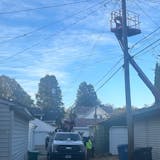Between the new apartments and restaurants of Lowertown and the busy breweries and stores of W. 7th Street, the heartbeat of downtown St. Paul remains barely audible.
Even as city leaders celebrate the growth of the past several years, they're turning their eyes to the Central Business District, where glossy corporate offices are just steps from vacant storefronts and not much happens after 5 p.m.
"We've made such great strides in downtown St. Paul over the last decade," said Joe Spencer, president of the Downtown Alliance. "We want to encourage that to continue to grow ever more strong, and grow toward the middle, which I think it is."
Local government officials are courting startups, planning park improvements, budgeting to rebuild streets and advocating for more transit. Long term, they envision major projects — including new skyscrapers — that would transform the face of the city.
It's an ambitious undertaking, one that Mayor Melvin Carter said he hopes outlives his time at City Hall.
"I see absolutely nothing but opportunity for downtown," the mayor said in an interview. "We want downtown to look like a place that you're there, and you say, 'This is where I want to plan my dream.' "
Those already downtown remain hopeful, but they also have seen big plans fall short.
Joe Furth moved his Eclipse Records to Wabasha Street from University Avenue in 2011. While he likes being downtown, he said, he's worried about the lack of activity — even with new development, like the Treasure Island Center on the former Macy's site.


